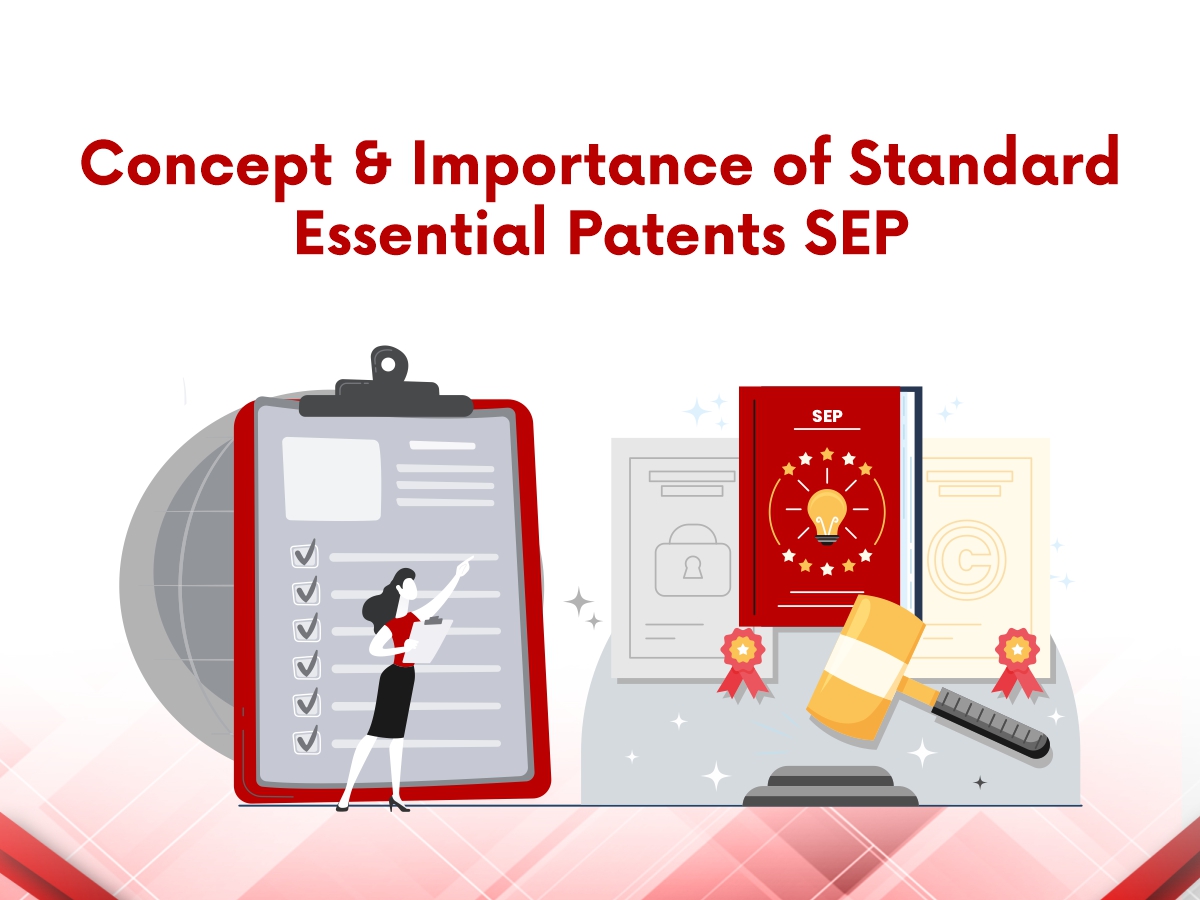
Standardized technology has benefited society in many ways, from the phones in our pockets to the computer networks that support our connections with friends and family. Technical standards are essential to our day-to-day existence. In this blog today, we are going to know in-depth about the concept and importance of SEP.
When inventors agree to license their patented innovations to the Technical Standard on “fair, reasonable, and nondiscriminatory” (FRAND) terms, technical standards are most effective.
Technical Standards also make it easier for small and medium-sized businesses to enter the market, fostering competition that lowers costs and expands access to these cutting-edge products.
SSOs is the Standard Setting Organisations which makes these standards to classify which patent will fall under the category of SEPs. SSOs perform several crucial functions in the advancement of technology and the industry.
The main goal of SSOs is to promote competition among competing but compatible goods and services while preventing some participants from impeding others by ineffectively enforcing their patent rights. As a result, their first crucial responsibility is to create industry standards that will assure the compatibility of technological goods and make it easier for the necessary data to be exchanged.
Second, SSOs concluded long ago that they needed to impose restrictions on member firms’ SEP management to promote healthy competition. As a result, they created intellectual property rights (IPR) regulations that were designed to provide fair access to the patented technology required to carry out its standards.
The patent that asserts that the invention must be employed to comply with the standard is known as a Standard Essential Patent (SEP).
These patents, known as Standard Essential Patents (SEPs), are essential for the implementation of a specific technological standard. The patentee is reimbursed by licensees for their contributions while promoting the standard’s deployment more broadly throughout society and around the world by agreeing to license patents on FRAND terms.
A specific patent is ‘essential’ to a standard if the application of the standard requires infringement of the patent, even when acceptable replacements of that invention might have been included in the standard.
A patent is still required even if it “simply reads onto an optional area of the standard.” Since one or more SEPs cover these technologies, it is impossible to make things that conform to standards without SEP.
SEP is necessary because Technical Standards and Patents both support efforts to promote technological innovation and diffusion. Members of standard groups must disclose and give licenses to their existing and pending patents that cover the standards the organisations is producing.
The applicable standard established by Standard Setting Organizations gives rise to a body inclusive of fundamental requirements that every device must satisfy to comply with a certain standard.
Standards in several industries usually refer to innovations with patent protection. The Importance of standard-essential patents (SEPs) is that Patents encourage innovation by allowing businesses to safeguard their investment in R&D, whereas Standards establish connectivity between devices developed by various companies.
SEPs are strong patents that protect essential technology that other companies must adopt. When a product is determined to meet an essential standard, it is permitted to display a mark to let customers know the item complies with the rules.
Getting a license from the patent’s owner is the main prerequisite for using a patent. Many SSOs demands that their members commit to granting legally enforceable licenses to businesses that want to use the standard. The standard cannot be adopted if a member does not provide such an undertaking. Such licenses must be made accessible under Fair, Reasonable and Non-Discriminatory (FRAND) terms in order to encourage the use of the standard and allay any worries about competition. Thus, unlike the other patent rights, this one is not unalienable.
In this case, the owner of the SEP is required to grant a license on FRAND terms for the patented technology that defines the industry. The core of the standards development process is the licensing of Standards Essential Patents (SEPs) on Fair, Reasonable, and Non-Discriminatory (FRAND) conditions.
The main purpose of FRAND is to ensure that the market as a whole benefit from these patent terms while preventing the owner of such SEPs from abusing his dominant position.
As per a report by WIPO on Standard Essential Patents the importance of developing international standards is increasing in many industries in light of globalization and increased economic connections among states. It also supports the idea that patents and standards share certain common goals as they both foster or assist innovation and the spread of technology.
The difference between Regular and SEPs is:
SEPs provide a plethora of advantages to consumers and producers alike. Superior technology is made available to all manufacturers by the standard essential patents discussed above, allowing for its incorporation into goods.
This improves interoperability, encourages R&D, and makes technology transfers between businesses easier. For consumers, this leads to technical standardization and consistency of usage across products.

Protecting Innovation in Fashion: Key IP Strategies Every Fashion Brand Should Implement

From Lab to Table: How Cultivated Meat is Revolutionizing the Industry?

HEVC Video Compression: Revolutionizing Digital Media

Quantum Computing: Breakthroughs, Software Innovations, and Strategic Partnerships 2025
© Copyright 2024 – Wissen Research All Rights Reserved.